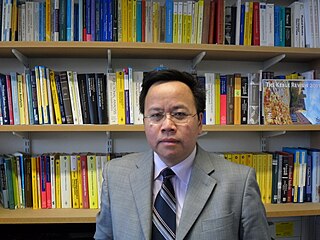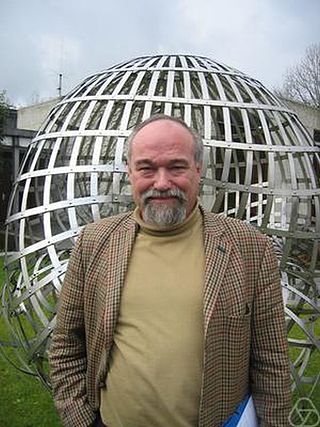Related Research Articles

Numerical analysis is the study of algorithms that use numerical approximation for the problems of mathematical analysis. It is the study of numerical methods that attempt to find approximate solutions of problems rather than the exact ones. Numerical analysis finds application in all fields of engineering and the physical sciences, and in the 21st century also the life and social sciences like economics, medicine, business and even the arts. Current growth in computing power has enabled the use of more complex numerical analysis, providing detailed and realistic mathematical models in science and engineering. Examples of numerical analysis include: ordinary differential equations as found in celestial mechanics, numerical linear algebra in data analysis, and stochastic differential equations and Markov chains for simulating living cells in medicine and biology.

Norwegian Computing Center is a private, independent, non-profit research foundation. NR carries out contract research and development in the areas of computing and quantitative methods for a broad range of industrial, commercial and public service organizations in Norway and internationally. NR is one of Europe's largest research environments in applied statistics and its projects cover a large variety of applied and academic problems. NR's offices are located near the university campus Blindern in Oslo, and adjacent to Oslo Science Park (Forskningsparken).
Computational science, also known as scientific computing, technical computing or scientific computation (SC), is a division of science that uses advanced computing capabilities to understand and solve complex physical problems. This includes
In numerical analysis, a multigrid method is an algorithm for solving differential equations using a hierarchy of discretizations. They are an example of a class of techniques called multiresolution methods, very useful in problems exhibiting multiple scales of behavior. For example, many basic relaxation methods exhibit different rates of convergence for short- and long-wavelength components, suggesting these different scales be treated differently, as in a Fourier analysis approach to multigrid. MG methods can be used as solvers as well as preconditioners.
Computational mechanics is the discipline concerned with the use of computational methods to study phenomena governed by the principles of mechanics. Before the emergence of computational science as a "third way" besides theoretical and experimental sciences, computational mechanics was widely considered to be a sub-discipline of applied mechanics. It is now considered to be a sub-discipline within computational science.
Simula Research Laboratory is a Norwegian non-profit research organisation located in Oslo, Norway.

Computational mathematics is the study of the interaction between mathematics and calculations done by a computer.
The Faculty of Mathematics and Computer Science is one of twelve faculties at the University of Heidelberg. It comprises the Institute of Mathematics, the Institute of Applied Mathematics, the School of Applied Sciences, and the Institute of Computer Science. The faculty maintains close relationships to the Interdisciplinary Center for Scientific Computing (IWR) and the Mathematics Center Heidelberg (MATCH). The first chair of mathematics was entrusted to the physician Jacob Curio in the year 1547.

The Interdisciplinary Center for Scientific Computing is a scientific research institute of the Heidelberg University, Germany. It centralizes scientific activity and promotes research and work in scientific computing. Founded in 1987 by the Heidelberg University and the state of Baden-Württemberg, IWR participates in joint project and cooperations with industry in Germany as well as abroad. As a research institute with about 380 staff, IWR is considered one of the world's largest research centers for scientific computing.

The FEniCS Project is a collection of free and open-source software components with the common goal to enable automated solution of differential equations. The components provide scientific computing tools for working with computational meshes, finite-element variational formulations of ordinary and partial differential equations, and numerical linear algebra.
Diffpack is a programming environment for developing simulation software for scientific and engineering applications. Diffpack has its main focus on the numerical modeling and solution of partial differential equations, in particular by the finite element method and the finite difference method.

Vladik Kreinovich is a professor of computer science at the University of Texas at El Paso.

Gui-Qiang George Chen is a Chinese-born American-British mathematician. Currently, he is Statutory Professor in the Analysis of Partial Differential Equations, Director of the Oxford Centre for Nonlinear Partial Differential Equations, and Director of the EPSRC Centre for Doctoral Training in Partial Differential Equations at the Mathematical Institute, and Professorial Fellow at Keble College, located at the University of Oxford, as well as Life Member of Clare Hall, University of Cambridge.
Hans Petter Langtangen was a Norwegian scientist trained in mechanics and scientific computing. Langtangen was the director of the Centre for Biomedical Computing, a Norwegian Center of Excellence hosted by Simula Research Laboratory. He was a professor of scientific computing at the University of Oslo, and was editor-in-chief of SIAM Journal on Scientific Computing 2011–2015.

Rolf Rannacher is a German mathematician and a professor of numerical analysis at Heidelberg University.
Mark H. Holmes is an American applied mathematician and Professor of Mathematics at Rensselaer Polytechnic Institute, where he served as Chair of the Department of Mathematical Sciences, and was the founding Director of the Center for Modeling, Optimization and Computational Analysis (MOCA).
Marie Elisabeth Rognes is a Norwegian applied mathematician specializing in scientific computing and numerical methods for partial differential equations. She works at the Simula Research Laboratory, as one of their chief research scientists.
Integrable algorithms are numerical algorithms that rely on basic ideas from the mathematical theory of integrable systems.
Dag I.K. Sjøberg is a Norwegian computer scientist, software engineer, and politician. He is a professor of software engineering at the Department of Informatics at the University of Oslo. From 2001 to 2008 he was Research Director at Simula Research Laboratory and headed the Department of Software Engineering.
References
- ↑ "Aslak.Tveito | Simula". www.simula.no. Retrieved 2016-04-21.
- ↑ "Aslak Tveito - Department of Informatics". www.mn.uio.no. Retrieved 2016-04-26.
- ↑ "Research Council of Norway Annual Report 2004 (Page 55)" (PDF). Archived from the original (PDF) on 2016-05-08.
- ↑ "Evaluering av Simula Research Laboratory AS - Norges forskningsråd". www.forskningsradet.no. Archived from the original on 2016-04-22. Retrieved 2016-04-21.
- ↑ "Evaluering av grunnleggende forskning innenfor informasjons- og kommunikasjonsteknologi - Norges forskningsråd". www.forskningsradet.no. Archived from the original on 2016-04-20. Retrieved 2016-04-21.
- ↑ "TVEITO, Aslak | NTVA". Archived from the original on 2016-04-02. Retrieved 2016-04-21.
- ↑ "Encyclopedia of Applied and Computational Mathematics - Editorial Board". springerreference.com. Archived from the original on 2016-04-28. Retrieved 2016-04-22.